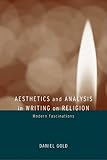Aesthetics and analysis in writing on religion : modern fascinations / Daniel Gold.
Material type: TextPublication details: Berkeley : University of California Press, ©2003.Description: 1 online resource (x, 304 pages)Content type:
TextPublication details: Berkeley : University of California Press, ©2003.Description: 1 online resource (x, 304 pages)Content type: - 9780520929517
- 0520929519
- 058546782X
- 9780585467825
- 9780520236134
- 0520236130
- 9780520236141
- 0520236149
- Religious literature -- Authorship
- Aesthetics -- Religious aspects
- Religion -- Methodology
- Esthétique -- Aspect religieux
- Religion -- Méthodologie
- RELIGION -- Education
- RELIGION -- Comparative Religion
- Aesthetics -- Religious aspects
- Religion -- Methodology
- Religious literature -- Authorship
- Humaniora Religionsvidenskab
- Teologi Teologi
- 200/.7/2 22
- BL41 .G65 2003eb
- online - EBSCO
| Item type | Current library | Call number | URL | Status | Notes | Barcode | |
|---|---|---|---|---|---|---|---|
 eBook
eBook
|
Biblioteca "Angelicum" Pont. Univ. S.Tommaso d'Aquino Nuvola online | online - EBSCO (Browse shelf(Opens below)) | Online access | Not for loan (Accesso limitato) | Accesso per gli utenti autorizzati / Access for authorized users | (ebsco)90463 |
Includes bibliographical references (pages 287-295) and index.
Addressing a fundamental dilemma in religious studies, this text explores the tension between humanistic and social scientific approaches to thinking and writing about religion. Daniel Gold develops a line of argument that begins with the aesthetics of academic writing in the field.
Print version record.
Acknowledgments; Introduction: Modern Dilemmas in Writing on Religion; Part One: Ambivalent Feelings; 1. Fascinated Scientists and Empathizing Theologians; 2. Finding Middle Grounds; Part Two: The Art of Writing on Religion; 3. A Creative Process; 4. Other Scholars' UFOs; 5. The Religiohistorical Sublime; Part Three: Two Truths; 6. Relating Stories about Religious Traditions; 7. Aesthetic Objects and Objective Knowledge; Part Four: Working Together; 8. Interpreting Anew and Alone: Vision and Succession in Dutch Phenomenology; 9. Explaining Together: The Excitement of Diffusionist Ideas.


